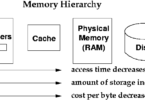Twisted Pair vs Coaxial Cable
Summary: Difference Between Twisted Pair and Coaxial Cable is that Twisted-pair cable consists of one or more twisted-pair wires bundled together. Each twisted-pair wire consists of two separate insulated copper wires that are twisted together. The wires are twisted together to reduce noise. While Coaxial cable, often referred to as coax (pronounced KO-ax), consists of a single copper wire surrounded by at least three layers: (1) an insulating material, (2) a woven or braided metal, and (3) a plastic outer coating.

Twisted Pair
One of the more commonly used transmission media for network cabling and telephone systems is twisted-pair cable. Twisted-pair cable consists of one or more twisted-pair wires bundled together. Each twisted-pair wire consists of two separate insulated copper wires that are twisted together. The wires are twisted together to reduce noise. Noise is an electrical disturbance that can degrade communications.
Coaxial
Coaxial cable, often referred to as coax (pronounced KO-ax), consists of a single copper wire surrounded by at least three layers: (1) an insulating material, (2) a woven or braided metal, and (3) a plastic outer coating. Cable television (CATV) network wiring often uses coaxial cable because it can be cabled over longer distances than twisted-pair cable. Most of today’s computer networks, however, do not use coaxial cable because other transmission media such as fiber-optic cable transmit signals at faster rates.
Also Read:
Difference Between Fiber Optic Cable and Coaxial Cable
Difference Between Twisted Pair and Fiber Optic Cable
Difference Between Wireless Access Point and Router







Leave a Comment
You must be logged in to post a comment.